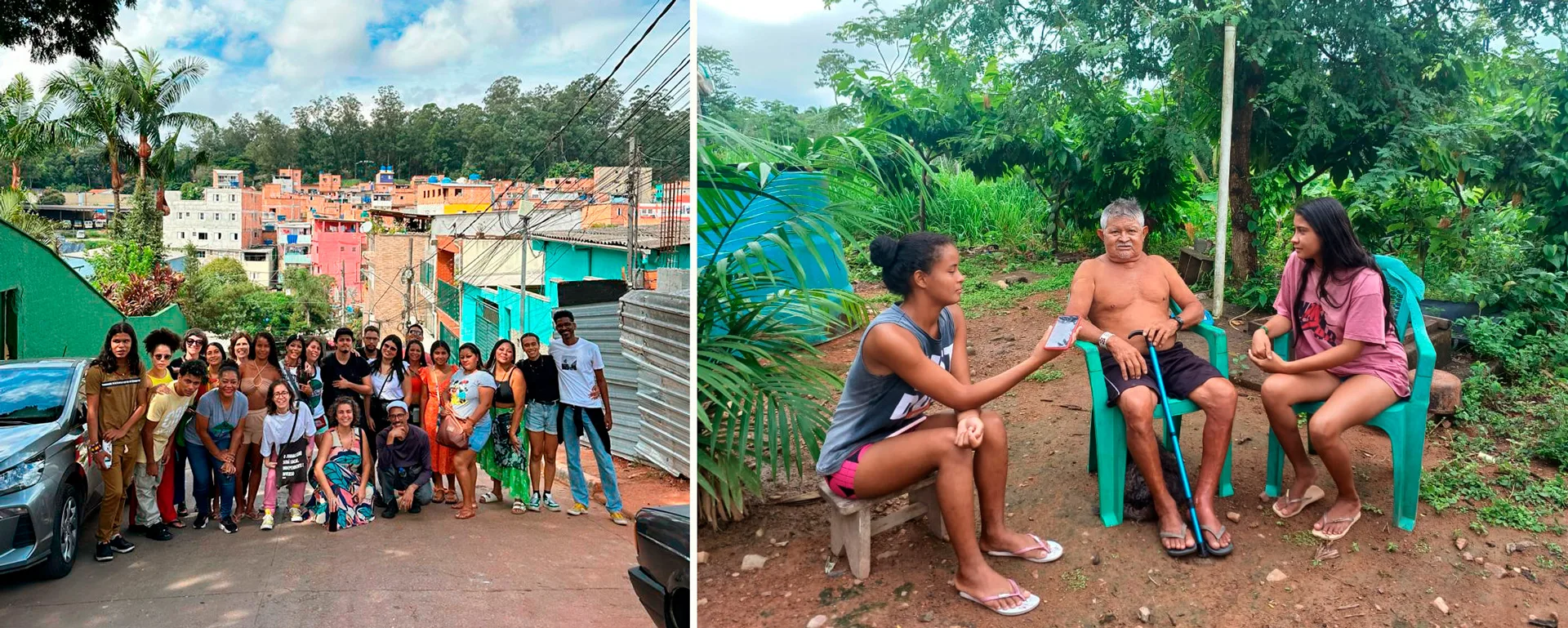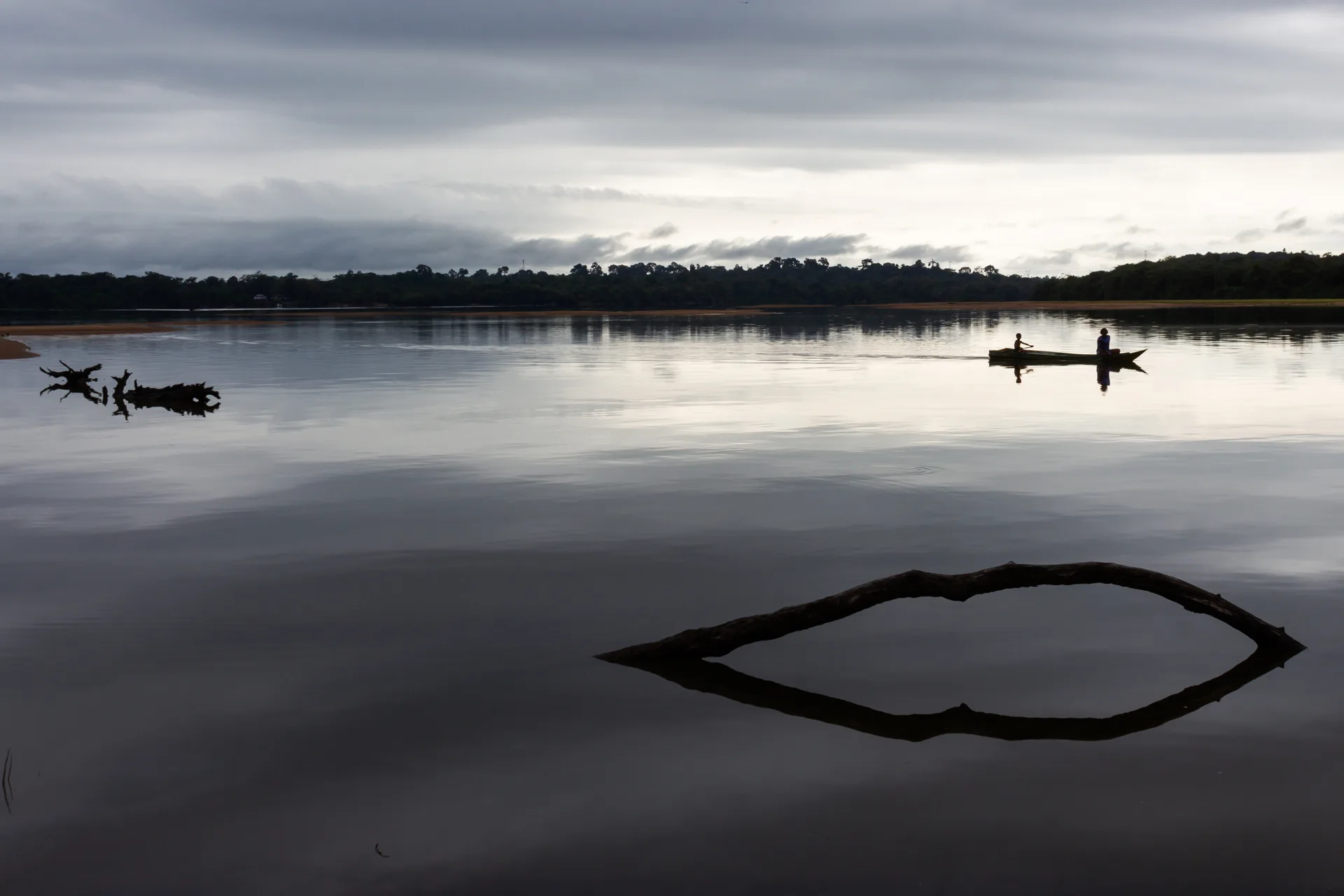Today, SUMAÚMA turns two years old. It seems like 10 to some of us, because planting a tree of stories in the Amazon demands all of our bodies. But because SUMAÚMA is a life project and not a business plan, I can tell you all we have come to a new place at this moment – and it is an important place.
As expressed in our sowing manifesto, we have a commitment to make the newsroom progressively more Amazonian and within ten years – now eight – mostly Amazonian. And this is also true for leadership positions, because as we know, real transformation only comes when power is occupied by those who didn’t count and weren’t counted (or were miscounted). This is an even more difficult mission than practicing good journalism in times when Nature is being destroyed and the truth is being destroyed – both of which are connected.
For this reason we created Micélio, our forest-journalist co-formation program, and we held our first edition at our home base, on the Xingu River in Altamira. At the end of the program our 14 missalientes – as they like to be called – took part in an exchange with journalism collectives in the so-called “peripheral” areas of São Paulo, Brazil’s largest city. For us at SUMAÚMA, this is a center-center connection and we believe it will be possible to make a world where alliances are strengthened and the centers occupy the place that is legitimately theirs.

At left, a group of ‘missalientes’ in the Paraisópolis community, in the city of São Paulo, making a center-center connection with journalism collectives in the urban periphery; at right, Raylane Juruna and Weslane Xipaya Juruna interview an elder, Agostinho Juruna, in Mïratu village, in the Paquiçamba Indigenous Territory. Fotos: Ilana Katz and Josiel Juruna
Two forest-journalists trained by SUMAÚMA are now working out of our press room in Altamira: Ju Bastos and Soll, young Black reporters from Altamira. In a few months, a young Indigenous reporter from Terra do Meio will join them. Beyond reporting, administration and production are being run by Daniele Graça, an Amazonian native from Belém, Pará. Soon we will be putting out the call for candidates for the next edition of Micélio, this time opening it to the entire Legal Amazon area.
Soll, with his first multimedia story, is a finalist for a major international journalism award. Catarina Barbosa, a native of Belém, Pará, and the daughter and granddaughter of Ribeirinhas, had an investigative project selected by the Rainforest Investigations Network (RIN), managed by the Pulitzer Center, which is being followed and will be published in SUMAÚMA. Last year, she was given an honorable mention by the Vladimir Herzog Award for a story we published.
The transformation that these new perspectives, imaginations, and experiences have produced at SUMAÚMA is even bigger than we had hoped. Day-to-day, we are now able to realize the power that comes from diverse views, languages, and storytelling whose existence we had only suspected before. We can also say that our imagin/action is possible.
Our trilingual platform from the center of the world is already beginning to take on new nuances starting with these first forest-journalist reports. Each year, this power will be amplified with voices from other Amazons. For the point of arrival to also – and always – be a point of departure, today we are launching a funding drive to make our tree stronger. It’s impossible to make a world alone; those who believe in our manifesto need to commit with more than likes (although we do really like the likes).
Our journalism bears the marks of excellence: we carry out rigorous and completely independent verification, with fact-checking, proofreading and copyediting, and professional native translation to Spanish and English. Our reporting isn’t done by phone or internet, we go to the forest, in the most expensive region for reporting in Brazil and one of the most expensive on the planet. So much so that to cope with the crisis in major newsrooms, the two people who conceived SUMAÚMA also created, with other colleagues, the Rainforest Journalism Fund, which has been financing Pan-Amazonian reporting for five years.
I would like to ask you to engage with our campaign through the Apoia.se platform, which as of today is being shared on our social media. We need money to support our journalism, and the best way to guarantee independence is with donations from those who believe our manifesto-work is important. As a reward, we will have a limited series of postcards with the best photographs we’ve published and the forest voices we’ve brought to our reports in these first two years of SUMAÚMA.

A photograph by Soll, the first hire from the forest-journalist co-formation program, shows Canari Island during a meeting of the Guardians of the Xingu
We will also hold two events: one with me, Eliane Brum, to discuss my book Banzeiro Òkòtó – The Amazon as the Centre of the World (Graywolf in USA and Indigo Press in UK), and another with Jonathan Watts, talking about his book The Many Lives of James Lovelock: Science, Secrets and Gaia Theory (Canongate). This book, recently released in the United Kingdom, but not yet available in Portuguese and Spanish, is a biography of the British scientist who fathered Gaia Theory and helped shape the 20th century.
We are launching this temporary campaign with the hope that supporters will want to become a permanent part of our community of readers. One of the goals in this SUMAÚMA’s third year is precisely to create new instruments of participation for this community to have a more active presence in our daily operations. Reader-supporters will have the chance to connect and also irrigate this tree of moving words.
So that everyone can have the experience of participating in the SUMAÚMA community, our next Moitará meeting will be open to all. On September 24, during the streaming event, our columnist Sidarta Ribeiro will interview one of our collaborators, Raimunda Gomes da Silva. Also known as Raimunda Tutanguira, she is the co-creator of Howler, our comic strip for kids, a type of anti-Mogli and certainly an anti-Tarzan. Yet this time Raimunda, a Ribeirinha from the Xingu River (and from various others) will talk about her first book, Cartilha de Mezinhagem (N-1 Edições, produced by the Buiúnas network). Hosting and mediating will be MC Joaka Barros, who took part in our first edition of Micélio.
This Moitará is a way to bring our readers at least some of the light that our 2-year anniversary celebration brought to the over 100 people who showed up to the Altamira campus of the Federal University of Pará on August 23. On this day Raimunda launched her book at the university, arriving there by boat. Nothing could be more symbolic – and nothing could be more real – than a writer who for nearly ten years looked at the “pen” with horror (usually wielded by persecutors, including journalists’ and writers’) and who has now appropriated the instrument of destruction, converting a violent pen into a curing pen.
This is the vital spirit of SUMAÚMA, this is how we make this world and this is the invitation to this minidocumentary-gift: come sumaumate with us – join us.
Text: Eliane Brum
Fact-checker: Plínio Lopes
Proofreader (Portuguese): Valquíria Della Pozza
Spanish translation: Julieta Sueldo Boedo
English translation: Sarah J. Johnson
Photo Editor: Lela Beltrão
Editorial workflow: Natália Chagas
Editor-in-chief: Talita Bedinelli
Editorial director: Eliane Brum





